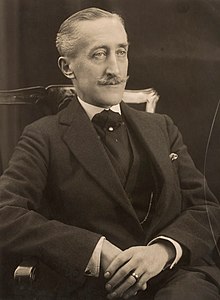
Madras Presidency at the time of the first elections
At the time of the first elections in 1920, there were only 2 major parties contesting: The Congress and the Justice Party. However, just months before the elections were due, the Congress called for the non-cooperation movement. The Congress in the Madras Presidency was dominated by those who wished to follow Gandhi's call, and so the few who wanted to contest elections were outvoted.
The Justice Party faced no real opposition in the 1920 elections, except some independents.
The Justice
Party was formed in 1916, with a Non-Brahmin manifesto. Their aim was to
promote the needs of non-Brahmins in the state, who formed the majority. The
founders were all non-Brahmin, but mostly upper-class, Zamindars, Rajas,
bankers. They came into the city in that decade and settled. Officially the
Party was the South Indian
Liberal Federation, but it was known by the name of its English
publication, ‘Justice’. They also published Tamil and Telugu papers, Dravidan
in Tamil and Andhra Prakasika in Telugu.
Despite the calls by Mahatma Gandhi for a boycott of the elections, only six had no candidate.
Not many speeches were made in the campaign but there was a lot of excitement and posters.
Voting was low overall, not more than 25% of the 3% eligible to vote. In Madras city, it was almost 58%. High polling came from Mylapore, of 75%! Compare that with this years, when it was the lowest in the state. The four elected from Madras city were, Pitty Thiagaraya Chetty, President of the Justice Party, CP Ramaswamy Iyer, an eminent lawyer and who would be appointed to the Governors council as Advocate General, Dr U Rama Rao, an independent and who would later be a prominent Congress member, and O Thanikachallam Chetty, earlier a Justice Corporation official in Madras city. T Rangachari, a Congress supporter, was elected to the Centre from Madras city.
After the results of the elections, Thyagaraya Chetty was asked to be the First Minister, and form a coalition ministry with the nationalists. But he refused.
The first First Minister(as the Chief Minister was referred to in those days) was A Subbarayulu Reddiar, a landowner and businessman from South Arcot. However, he resigned very soon due to ill health and he was replaced by the Raja of Panagal. Thiagaraya Chetty resigned, as he was more concerned with local administration than with the Province as a whole.
There were 3 Indian ministers who were chosen, alongside the Raja of Panagal. A Subbarayulu Reddiar, (who was replaced by Panagal, whose position was taken by A P Patro, a lawyer and landholder from Vizag) and K V Reddy Naidu, a landholder from Nellore. (a later Governor and Chief Minister of Madras Presidency). They were appointed by Wellingdon, who was the Governor of Madras at that point.
Elections were simultaneously held to the central houses as well.
Local elections were also held, but over time, these became more and more influenced by Justice Party elects, as they used their positions to influence who would be chosen, or simply to annul elections and nominate a relative or chosen favourite.
One of the first major policies the Justice Party-led legislature passed was giving women the vote. Initially, women were not allowed to vote, but the Women’s India Association had been representations to the Government of India for a while. The Government decided to put it to a vote, and initially Madras and Bombay voted, in 1921. After a few hours of discussion, Madras cleared the bill, and women were given the right to vote, with 40 members for, and 10 against, among the 90 present. And so Madras became the first state in India to give women the right to vote, just a year after the US.
The 1923 elections would give the Justice Party some opposition in the form of the Swaraj party, and also give rise to the first no-confidence motion in India.
(to be continued)

Freeman Freeman-Thomas, Marquess of Willingdon, Governor of Madras
(image:wiki)
No comments:
Post a Comment